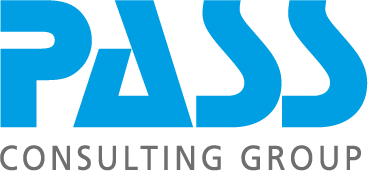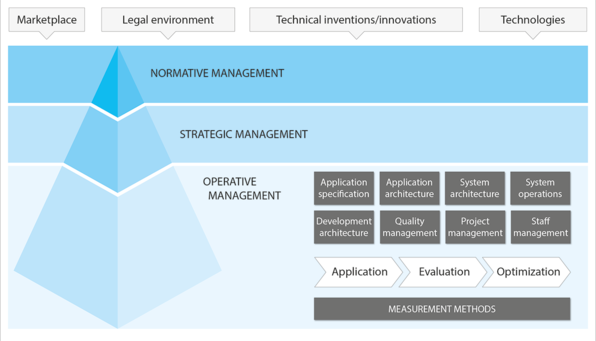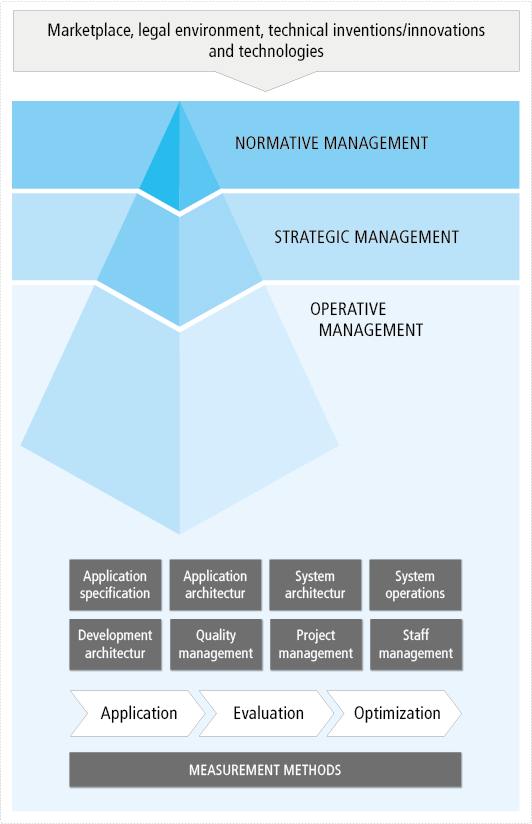IT Quality Management for targeted improvements
Focus on productivity, costs and quality with the PASS Management Model
The PASS Management Model requires three elementary key performance indicators (KPIs): productivity, costs and quality. Using the right measurement methods, the application of which can be automated in many cases, these KPIs can be collected on a specific key date.
Valuable information is garnered from the regular collection of key date-based KPIs and the analysis of their progress over time. In this way, for example, it becomes apparent whether productivity increases or decreases over an extended period, whether measures to increase productivity or new releases impact negatively on quality, or what effect changes to framework conditions can have. By comparing different projects or organizational units, differences in performance also become clear; this understanding is vital in the quest for targeted improvements.
Field-tested IT Quality Management by PASS
Various spheres of activity (Key Performance Areas, KPAs for short) wield varying degrees of influence on the relevant KPIs. By acknowledging these leverage effects, improvement measures can be planned and implemented in a goal-oriented manner in cost-benefit terms. After implementation, its effectiveness can be evaluated based on the subsequent KPI progress over time, delivering further indications for optimization.
PASS has been using this model for IT Quality Management successfully for many years itself - in more than ten application landscapes with over 500 customers and approx. 250,000 users. In the book series Produktivitätssteigerung in der Softwareentwicklung (German), measurement methods, the management model itself and empirical values are discussed in relation to potential improvements.
More than 10 application landscapes
Over 500 customers
Approx. 250000 users
We use a quick assessment as a guide to ascertain how measurable productivity and quality are in your IT shop, how you can automate these measurements, and which organizational and process-related requirements need to be satisfied in order to implement our KPI-based IT Quality Management. We perform an initial measurement of productivity and quality, and use our own empirical values as a benchmark to show you where you currently stand and what potential for improvement is possible.
When measuring the functional scope, the objects to be counted, for example, input and output elements in the user interface and interface attributes, are mapped to constructive characteristics, which can be counted by the program. The complete system scope is always measured with each program run. By calculating the difference with respect to the previous measurement, the scope of further development can be defined.
Many methods for measuring the functional scope, for example, the Data-Interaction-Point Method (DIP Method) used by PASS, take into account the complexity of interactions between the system to be measured and the actors involved in its application cases. Algorithmic complexity is not taken into account.









